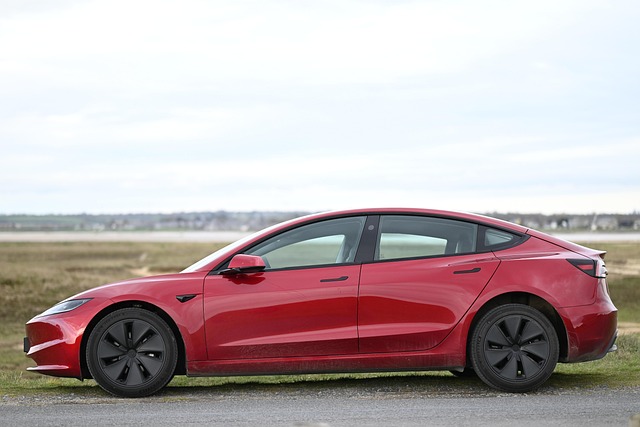Climate change is one of the most urgent challenges of our time, with greenhouse gases accelerating temperature rises, sea‑level rise, and extreme weather events. Traditional industrial activities—especially those relying on fossil fuels, linear production chains, and wasteful consumption—are major contributors to global emissions. To shift from a damage‑oriented trajectory to a restorative one, businesses must rethink their core operating logic. Sustainable business models are emerging as powerful tools that embed environmental stewardship into every decision, from product design to supply‑chain governance. By reimagining value creation, these models reduce carbon footprints while also unlocking new revenue streams, enhancing competitiveness, and strengthening resilience against climate‑related risks.
What Makes a Business Model Sustainable?
A sustainable business model is defined by its ability to generate economic value while simultaneously minimizing environmental harm and fostering social equity. This dual focus manifests through four key dimensions: resource efficiency, low‑carbon technology adoption, systemic collaboration, and transparent stakeholder engagement. Unlike conventional models that prioritize short‑term profits, sustainable frameworks incorporate life‑cycle thinking, placing a premium on renewable inputs, recyclable outputs, and energy‑efficient operations. They also embed climate metrics—such as Scope 1, 2, and 3 emissions—into core performance indicators, enabling continuous monitoring and improvement. In practice, this translates into concrete actions: electrifying fleets, switching to renewable energy, and redesigning products for durability or end‑of‑life reuse.
Innovation in Business Models for Emission Reduction
Emerging business models are redefining how companies address carbon emissions. The “product‑as‑a‑service” model, for instance, transfers ownership from consumers to providers, encouraging manufacturers to design for longevity and repairability. By keeping products in circulation longer, firms reduce the need for new material extraction and lower embodied emissions. Similarly, the “leasing” model for renewable assets—such as solar panels or electric vehicle fleets—shifts capital expenditure away from users, democratizing access to clean technology. Subscription services that bundle maintenance, upgrades, and recycling further embed sustainability into the customer journey. These innovations hinge on robust data analytics, contractual transparency, and long‑term partnerships that align incentives between producers, consumers, and circular suppliers.
Circular Economy in Practice
The circular economy is a systemic approach that keeps resources in use for as long as possible. Companies adopting circular strategies—such as take‑back programs, closed‑loop recycling, or design for disassembly—can cut emissions by reducing the demand for virgin raw materials. A notable example is the textile sector’s shift from linear “produce‑consume‑discard” models to closed‑loop recycling of fibers. By using advanced sorting technologies and chemical recycling, firms convert post‑consumer waste into high‑quality yarn, cutting the need for new cotton cultivation and associated methane and nitrous oxide emissions. Likewise, the packaging industry is embracing biodegradable materials and reusable containers, lowering both plastic waste and the embodied carbon of single‑use packaging. These circular practices not only mitigate emissions but also enhance resource security and create new market opportunities.
Sharing Economy and Platform Models
Platform‑based sharing models, such as ride‑sharing, co‑working spaces, and tool‑sharing networks, concentrate usage of assets, thereby diluting the per‑unit environmental impact. By maximizing utilization rates, these platforms reduce the number of vehicles, buildings, or appliances needed, which directly translates into lower fuel consumption, reduced construction emissions, and decreased material demand. Furthermore, the digital nature of these platforms enables real‑time optimization—matching supply with demand, routing vehicles efficiently, and predicting maintenance—leading to additional energy savings. The key to scaling such models lies in robust regulatory frameworks, trust mechanisms, and data governance that protect user privacy while fostering transparency about the environmental benefits of shared usage.
Green Finance and Sustainable Business Models
Capital flows are increasingly aligning with climate objectives, creating a fertile environment for sustainable business models. Green bonds, sustainability‑linked loans, and climate‑risk‑adjusted equity premiums reward firms that demonstrate measurable emission reductions and robust climate strategies. These financial instruments compel companies to adopt transparent reporting—such as the Task Force on Climate‑Related Financial Disclosures (TCFD) framework—and to integrate climate risk into corporate governance. Moreover, innovative financial mechanisms, like impact investment funds or blended finance structures, lower the upfront cost of renewable infrastructure and circular initiatives, making them more attractive for businesses with limited capital. By embedding environmental performance into the cost of capital, green finance reinforces the economic viability of emission‑reducing business models.
Looking Ahead: Policy, Collaboration, and Innovation
Achieving meaningful emission reductions through sustainable business models requires a cohesive ecosystem of policy, market incentives, and collaborative innovation. Governments can facilitate this transition by establishing carbon pricing mechanisms, providing tax credits for renewable integration, and mandating lifecycle assessments in procurement. Public‑private partnerships can accelerate research into low‑carbon materials, digital tools for carbon accounting, and scalable circular supply chains. Consumer demand will continue to shape the market—expectations for transparency, ethical sourcing, and climate responsibility are rising. As businesses adapt, they will not only reduce emissions but also build resilience against climate disruptions, secure long‑term profitability, and contribute to a just transition for all stakeholders.



